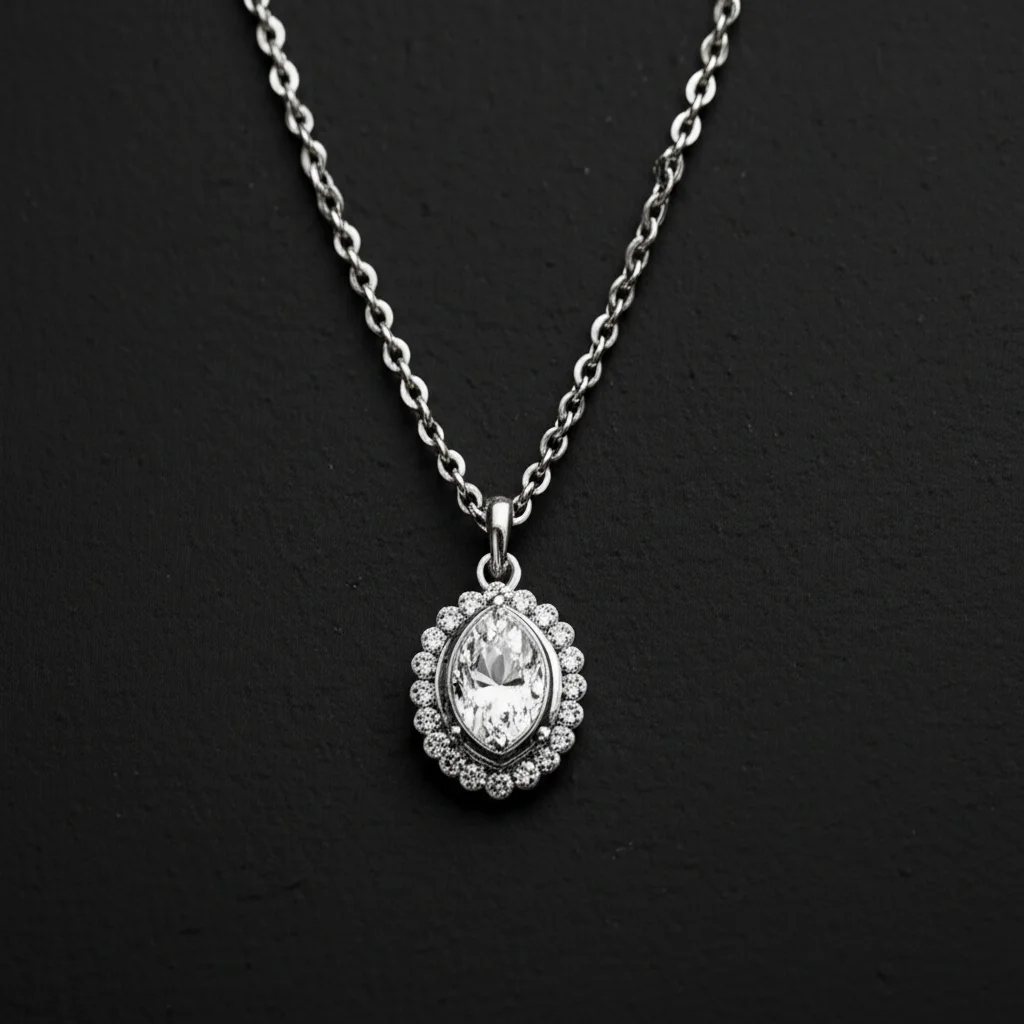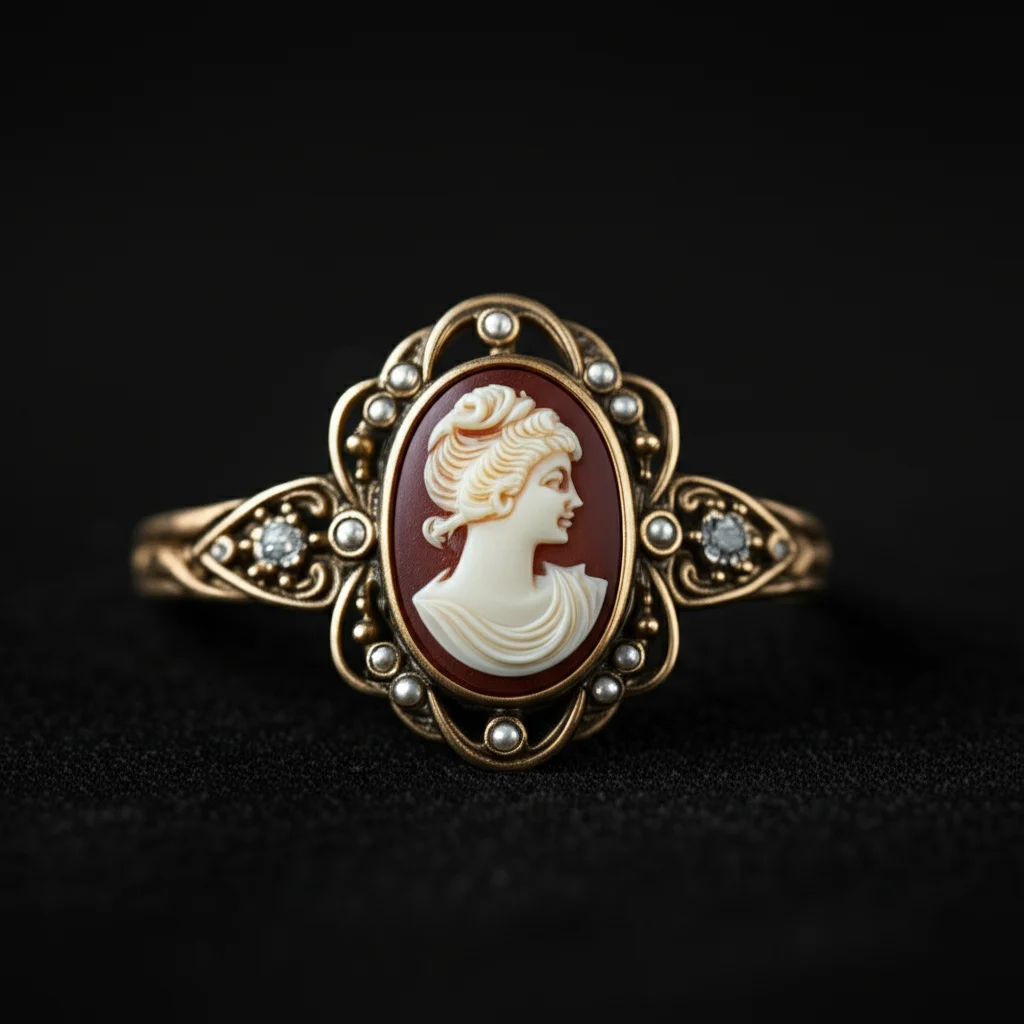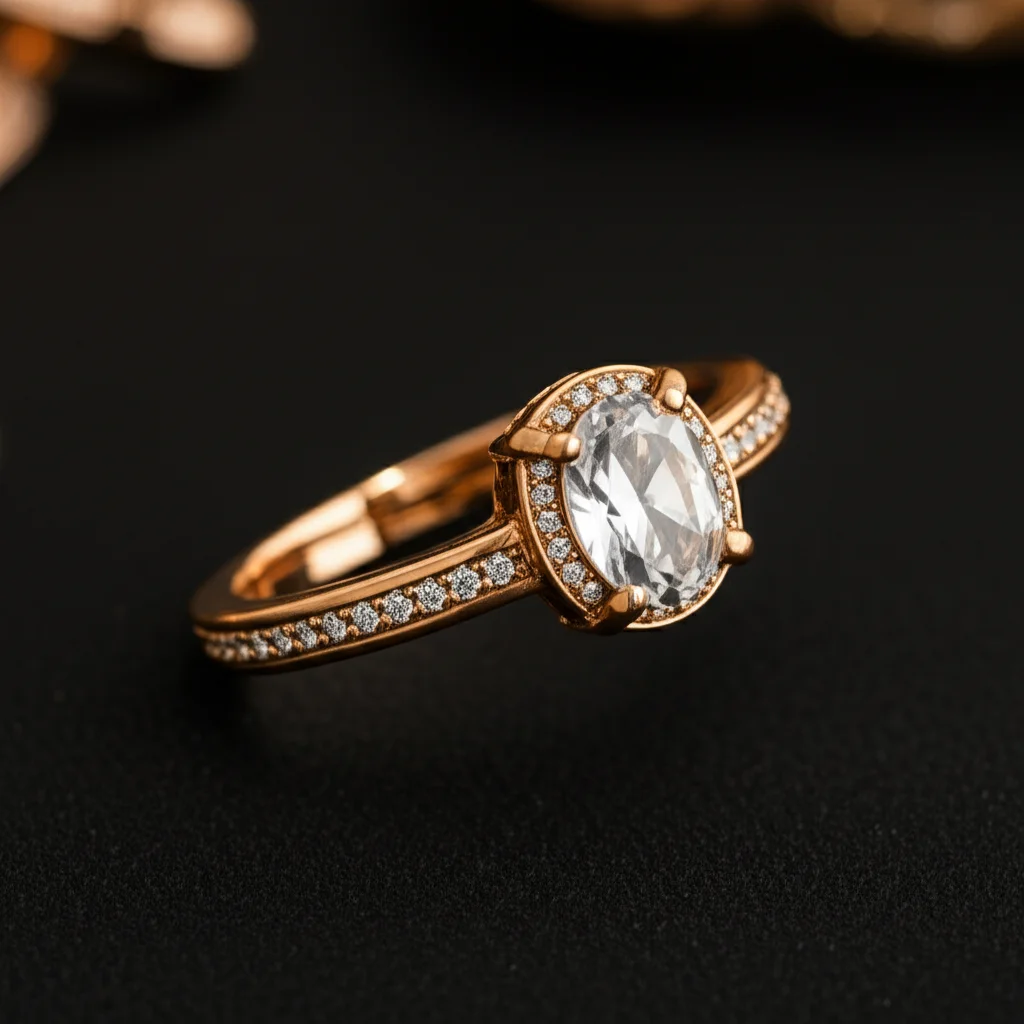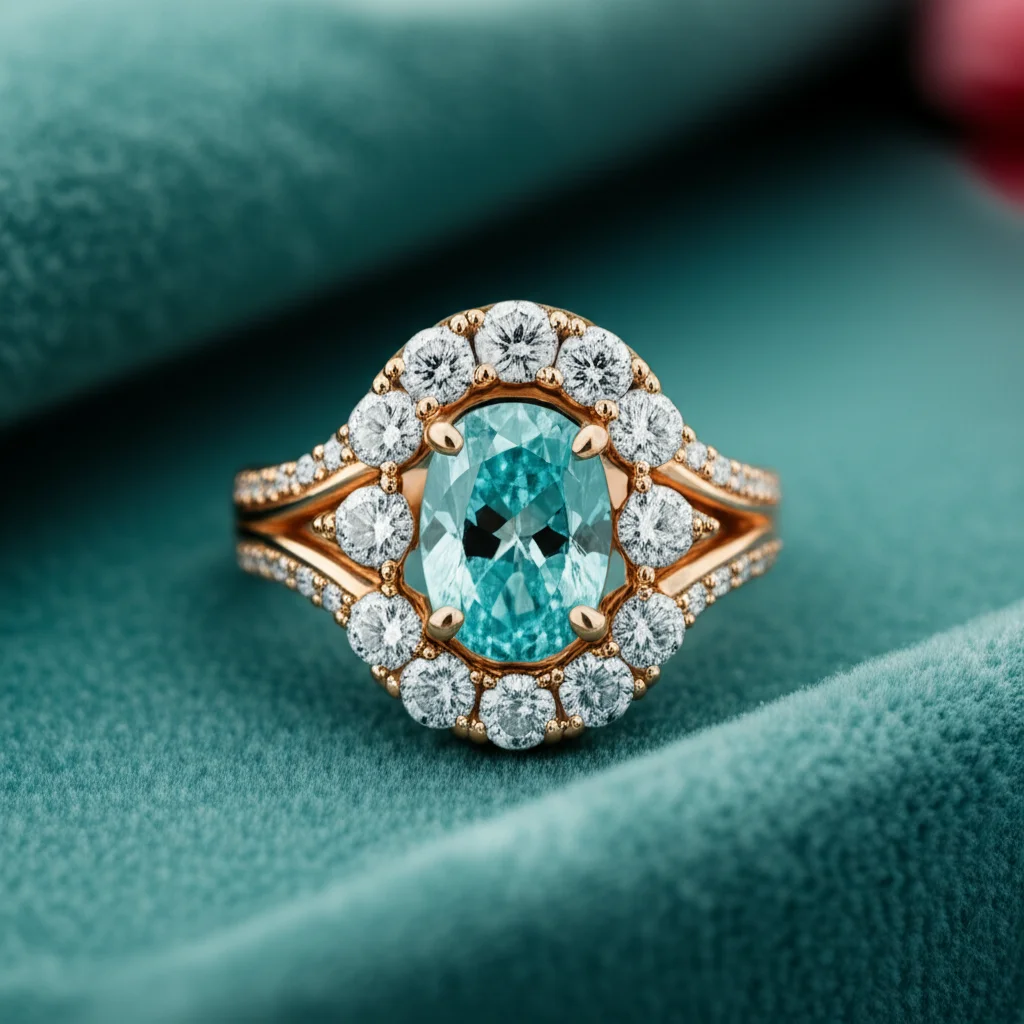· Todd Martin · Jewelry Care · 17 min read
How To Clean Jewelry At Home Metals
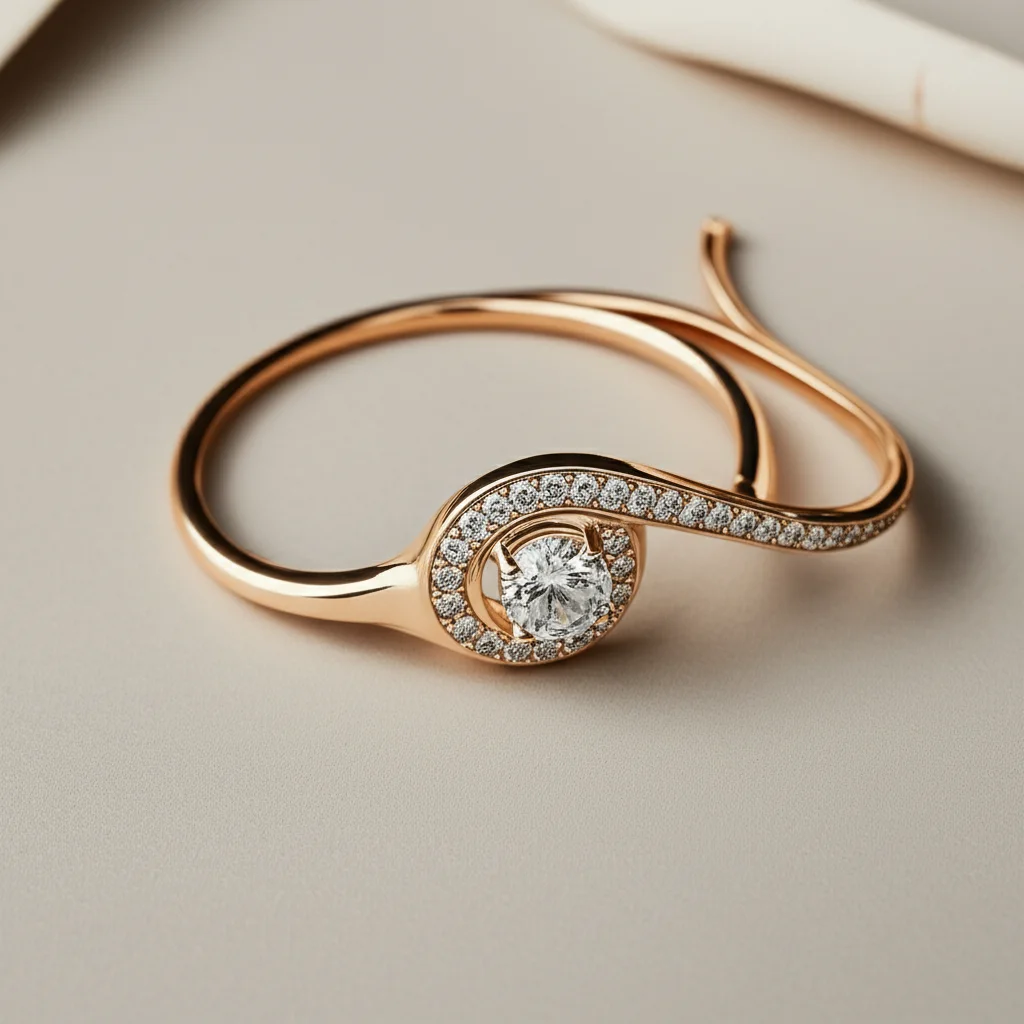
How To Clean Jewelry At Home: Essential Tips for Every Metal
Do your favorite rings, necklaces, and bracelets look a little dull? Over time, jewelry collects dirt, oils, and residues from everyday wear. This makes precious pieces lose their shine. Knowing how to clean jewelry at home, specifically different metals, keeps them sparkling. You can restore their beauty without needing professional help. This guide will walk you through safe and effective methods. We cover various common jewelry metals. We will help you maintain your cherished items for years.
Takeaway
- Identify your jewelry’s metal type before cleaning.
- Use mild soap and warm water for most precious metals.
- Baking soda and aluminum foil work well for tarnished silver.
- Avoid harsh chemicals or abrasive materials on any jewelry.
- Store jewelry properly to prevent tarnish and damage.
Cleaning jewelry at home involves using simple household items to remove grime and restore shine. The best method depends on the metal type, but generally, mild soap, warm water, and a soft cloth are safe starting points.
Understanding Your Jewelry’s Metal Type
Before you clean any piece of jewelry, you must know what metal it is. Different metals react differently to cleaning agents. Using the wrong cleaner can cause damage or discoloration. Identifying the metal ensures you choose a safe and effective method.
Gold, silver, and platinum are precious metals. They are generally durable but require specific care. Gold can be soft, especially higher karats, and silver often tarnishes. Platinum is very strong and less reactive. Costume jewelry, or plated jewelry, has a thin layer of precious metal over a base metal. This layer is delicate and can wear off easily. Brass and bronze are base metals that can also tarnish. I always check for hallmarks or ask where I bought the piece. This helps me understand its composition.
Knowing your metal helps prevent mistakes. You would not use the same strong polish on plated jewelry as you would on solid sterling silver. Delicate stones also need protection from certain chemicals. Always take a moment to identify the metal. This first step protects your valuable pieces.
Cleaning Gold Jewelry: Classic Sparkle at Home
Gold jewelry is a favorite for many. It is known for its lasting shine. Even pure gold can look dull with daily wear. Skin oils, lotions, and dirt build up on the surface. Cleaning your gold pieces at home brings back their natural brilliance. It helps them look new again.
Gold comes in different karats, like 10K, 14K, 18K, and 24K. Higher karat gold is softer and more prone to scratching. Lower karats contain more alloy metals, making them harder. These alloys can sometimes react differently to cleaning. For most gold jewelry, simple methods are best. I use these techniques often.
Pure Gold vs. Gold Alloys
Pure gold, or 24K gold, is very soft. It rarely tarnishes but can still get dirty. Most gold jewelry is an alloy, mixed with other metals like copper, silver, or zinc. This makes it stronger and gives it different colors, like white gold or rose gold. These alloys can sometimes tarnish slightly, especially if exposed to certain chemicals. Always handle high-karat gold gently to avoid bending or scratching.
Simple Soapy Water Method
This is the safest and easiest way to clean most gold jewelry. It works for all karats. You only need a few basic items. I use this method for my gold wedding band regularly.
Steps:
- Get a small bowl and fill it with warm, not hot, water.
- Add a few drops of mild dish soap. Choose one without harsh detergents or strong perfumes.
- Place your gold jewelry into the solution. Let it soak for about 15-20 minutes. This softens any grime.
- Use a soft brush, like a clean, soft-bristled toothbrush, to gently scrub the jewelry. Pay attention to crevices and settings.
- Rinse the jewelry under cool, running water. Make sure all soap residue is gone.
- Dry the piece thoroughly with a soft, lint-free cloth. Polishing cloths work well. Do not let it air dry, as this can leave water spots.
For more detailed gold cleaning, especially for rings, check out our guide on how to clean a ring at home.
The Baking Soda Paste
Baking soda is a mild abrasive that can help remove stubborn dirt from gold. You must use it carefully. It is especially useful if your gold piece has some minor tarnish or dullness. Many people ask about specific methods, and this is a common one.
Steps:
- Mix a small amount of baking soda with a tiny bit of water to form a thick paste. Do not make it too watery.
- Apply the paste to your gold jewelry with your fingers or a cotton swab. Avoid rubbing hard.
- Gently rub the paste onto the surface of the jewelry with a soft cloth or a very soft toothbrush.
- Rinse thoroughly under cool, running water.
- Dry completely with a soft, lint-free cloth.
If you are looking for specific baking soda methods for gold, our article on how to clean gold jewelry with baking soda offers more insights. Similarly, for those curious about using toothpaste, we have information on how to clean gold jewelry with toothpaste, though caution is advised as some toothpaste can be too abrasive.
Bringing Back the Shine to Silver Jewelry
Silver jewelry, especially sterling silver, is beautiful but it tarnishes over time. This happens when silver reacts with sulfur in the air. Tarnish appears as a dark, dull film on the surface. It makes silver look old and neglected. Luckily, cleaning silver at home is quite effective. You can restore its bright, lustrous finish. I often bring back the shine to my own silver pieces.
Sterling silver is 92.5% pure silver and 7.5% other metals, usually copper. The copper content makes sterling silver stronger but also more prone to tarnish than pure silver. Regular cleaning prevents heavy tarnish buildup. If you have old, heavily tarnished items, our guide on how to clean old jewelry can provide additional help.
Dealing with Tarnish
Tarnish is a chemical reaction, not just dirt. It needs specific methods to remove. Simple soap and water might clean off surface dirt, but they will not remove tarnish effectively. You need something that reacts with the sulfur compounds. Knowing how tarnish forms helps you prevent it too. Air exposure is the main culprit.
Baking Soda and Aluminum Foil Trick
This method uses a chemical reaction to remove tarnish. It is a popular and very effective way to clean silver. It does not involve scrubbing, which is good for intricate pieces. I have seen amazing results with this method.
Steps:
- Line a glass bowl with aluminum foil, shiny side up.
- Place your silver jewelry on the foil, making sure each piece touches the foil.
- Sprinkle a few tablespoons of baking soda over the jewelry.
- Carefully pour hot water over the jewelry until it is completely submerged. You will see bubbles and a slight smell. This is the chemical reaction working.
- Let it soak for 5-10 minutes, depending on the tarnish level. For very heavy tarnish, you might see the water turn yellowish as the tarnish leaves the silver.
- Remove the jewelry with tongs. Rinse it thoroughly under cool, running water.
- Dry and polish with a soft, lint-free cloth.
For specific branded silver jewelry like Tiffany, the principles are similar. You can find more targeted advice on how to clean Tiffany silver jewelry, which often emphasizes gentle care.
Silver Polishing Cloths
For light tarnish or regular maintenance, a silver polishing cloth is excellent. These cloths are treated with a special cleaning agent. They gently wipe away tarnish and restore shine. They are easy to use and portable. I keep one handy for quick touch-ups.
Steps:
- Hold the silver piece firmly.
- Rub the jewelry gently but firmly with the polishing cloth. You will see black marks appear on the cloth as it removes tarnish.
- Continue rubbing until the desired shine is achieved.
- No rinsing is needed after using a polishing cloth.
Remember, if your silver jewelry has specific stones like turquoise, different care might be needed. Our guide on how to clean silver turquoise jewelry provides specialized advice.
Caring for Platinum and White Gold Jewelry
Platinum and white gold are popular choices for engagement rings and other fine jewelry. They offer a sophisticated, silvery-white appearance. While both metals look similar, their cleaning needs differ slightly. Understanding these differences helps you care for them properly. I ensure I treat my platinum pieces with the right methods.
Platinum is a naturally white metal. It is very durable and dense. It does not tarnish like silver. Instead, it develops a patina over time, a slight dulling of its shine. This patina is unique to platinum. White gold, however, is yellow gold mixed with white metals. It is then often coated with rhodium for a brighter, whiter finish. This rhodium plating wears off over time.
Platinum’s Durability and Cleaning
Platinum is incredibly strong and resistant to wear. It is known for its longevity. It does not lose metal when scratched; instead, the metal simply displaces. This means its weight remains constant over time. For cleaning, platinum is quite straightforward.
Steps:
- Mix warm water with a few drops of mild dish soap in a bowl.
- Place your platinum jewelry in the solution. Let it soak for 15-20 minutes.
- Gently scrub the piece with a soft-bristled brush. This removes dirt from crevices.
- Rinse the jewelry thoroughly under warm, running water.
- Dry completely with a soft, lint-free cloth.
Professional cleaning for platinum often involves ultrasonic cleaners. These can also be used at home if you own one. However, the mild soap and water method is usually enough for regular cleaning.
White Gold’s Rhodium Plating
White gold gets its bright white appearance from a rhodium plating. Rhodium is a very white, reflective metal. This plating makes white gold look similar to platinum. Over time, this rhodium layer can wear away, revealing the slightly yellowish tint of the white gold underneath. Cleaning white gold involves being gentle to preserve this plating.
Steps:
- Use the same mild soap and warm water solution as for gold and platinum.
- Soak your white gold jewelry for a few minutes.
- Gently clean with a very soft cloth or soft-bristled brush. Be extra careful not to scrub too hard, as this can accelerate the wear of the rhodium plating.
- Rinse thoroughly and dry with a soft cloth.
Avoid harsh chemicals or abrasive cleaners on white gold. These can damage the rhodium plating. If your white gold jewelry starts to look yellow, it might be time for re-plating. A professional jeweler can do this for you. Regular gentle cleaning helps extend the life of the rhodium plating.
Gentle Care for Plated and Costume Jewelry
Many people own plated or costume jewelry. These pieces offer beauty and style at a lower cost. However, they require much gentler care than solid precious metals. Plated jewelry has a thin layer of gold, silver, or other metal over a base metal like copper or brass. Costume jewelry is typically made from non-precious metals and often includes glass, plastic, or synthetic stones. The key is to protect the delicate outer layer. I am always extra careful with my plated pieces.
The thin metal layer on plated jewelry can easily scratch or wear off. Once it wears away, the base metal underneath shows through. This can lead to discoloration or a dull appearance. Costume jewelry can also react with skin oils and turn green or black. Preventing damage is easier than trying to fix it.
Protecting the Finish
The most important rule for plated and costume jewelry is to avoid harsh chemicals and excessive moisture. This includes cleaning solutions meant for solid metals. These can strip the thin plating or damage the adhesives holding stones in place. Water can also cause the base metal to tarnish or rust. This is especially true for how to clean fake jewelry and how to clean plated jewelry.
Tips for Protection:
- Put on plated or costume jewelry last, after applying lotions, perfumes, and hairspray.
- Take off jewelry before showering, swimming, washing dishes, or exercising.
- Avoid exposing it to harsh cleaning products when cleaning your home.
- Wipe pieces clean after each wear.
Wipe and Store Method
For plated and costume jewelry, dry cleaning and proper storage are usually the best approaches. This minimizes exposure to elements that can cause damage. I follow this routine for all my fashion pieces.
Steps:
- After each wear, gently wipe the jewelry with a soft, dry, lint-free cloth. This removes oils, sweat, and makeup.
- If the piece is slightly dirty, you can very lightly dampen a cloth with plain water. Wipe the jewelry quickly, then immediately dry it thoroughly with a second dry cloth. Do not soak these pieces.
- Store plated and costume jewelry in a dry place. Keep it away from humidity.
- Store pieces separately, perhaps in small bags or compartments. This prevents them from scratching each other. Air-tight bags can help slow down tarnishing for some pieces.
For more specific instructions on cleaning 18K gold-plated items, you can refer to our guide on how to clean 18k gold plated jewelry, which highlights the importance of preserving the thin gold layer.
Cleaning Brass and Bronze Jewelry
Brass and bronze jewelry have a warm, earthy appeal. These metals are alloys of copper. Brass is copper and zinc, while bronze is copper and tin. Both can develop a beautiful patina over time, which some people prefer. However, they also tarnish, turning dark brown or greenish. This happens due to oxidation. You can clean them at home to restore their original shine. I have found effective ways to keep my brass pieces looking great.
Unlike precious metals, brass and bronze are less expensive. They are prone to showing fingerprints and can react with skin. This reaction sometimes leaves a green mark on the skin. Regular, gentle cleaning helps manage this.
Natural Patina vs. Tarnish
A natural patina is an even, dark coating that forms over time on brass and bronze. It can add character to a piece. Tarnish, however, is often uneven and looks dull or dirty. It might have green spots. You can choose whether to remove all tarnish or just clean the surface. If you prefer the aged look, clean gently to maintain the patina. If you want a bright shine, use slightly more active methods. Our guide on how to clean brass jewelry has more detailed information.
Lemon Juice and Salt Method
This is a common and effective natural cleaner for brass and bronze. The acidity of the lemon juice combines with the abrasiveness of the salt to remove tarnish. It is simple and uses household ingredients.
Steps:
- Squeeze fresh lemon juice into a small bowl.
- Add a pinch of salt to the lemon juice. Mix it to form a paste or thick liquid.
- Apply the mixture to the brass or bronze jewelry using a soft cloth or cotton swab.
- Gently rub the piece. You will see the tarnish start to lift away.
- Rinse the jewelry thoroughly under warm water. Ensure all lemon and salt residue is gone.
- Dry the piece completely with a soft, lint-free cloth. Polishing afterwards can enhance the shine.
Alternative Cleaning for Brass/Bronze:
- Vinegar and Salt: Similar to lemon juice, white vinegar can also be used with salt.
- Ketchup: The mild acids in ketchup can also help remove tarnish from brass and bronze. Apply a thin layer, let sit for 10-15 minutes, then rinse and dry.
- Mild Soap and Water: For light cleaning and removing oils, simply washing with mild dish soap and warm water works well. Always rinse and dry completely.
After cleaning, consider applying a thin layer of clear nail polish or a specialized metal lacquer to brass and bronze pieces. This creates a barrier. It slows down future tarnishing and prevents skin discoloration.
General Tips for All Jewelry Cleaning
Beyond specific metal care, some general practices apply to all types of jewelry. Following these tips ensures your pieces remain beautiful and undamaged. Good habits extend the life of your jewelry. I apply these rules to all my pieces, regardless of metal.
Regular cleaning prevents heavy buildup. It also reduces the need for more aggressive cleaning methods. Prevention is always better than cure for jewelry. Taking a few minutes each month can make a big difference.
Essential Tools You Need
Having the right tools makes cleaning easier and safer. You do not need many specialized items for home cleaning. Most are probably already in your house.
- Mild Dish Soap: A gentle, unperfumed soap.
- Warm Water: Not hot, as extreme temperatures can harm certain stones or metals.
- Soft-Bristled Brush: A baby toothbrush or a dedicated jewelry brush works well.
- Soft, Lint-Free Cloths: Microfiber cloths are excellent for drying and polishing.
- Small Bowls: For soaking jewelry.
- Cotton Swabs: For reaching small crevices.
- Aluminum Foil (for silver): If using the baking soda method.
What to Avoid
Using the wrong products or techniques can cause irreversible damage. Be careful and patient. Avoid these common mistakes.
- Harsh Chemicals: Bleach, chlorine, ammonia, and abrasive cleaners (like some household scourers) can damage metals, especially alloys, and can be very harmful to porous gemstones.
- Abrasive Materials: Rough cloths, paper towels, or stiff brushes can scratch delicate metals and stones.
- Hot Water: Can cause thermal shock to certain gemstones, leading to cracks. It can also loosen stone settings.
- Ultrasonic Cleaners for All Jewelry: While good for some metals, they can damage soft or porous stones (like pearls, opals, emeralds) and can loosen settings on fragile pieces. Use with caution.
- Soaking with Different Metals: Do not soak different metal types together, especially if one is prone to tarnish (like silver). Chemical reactions can occur.
- Toothpaste: Some toothpastes are too abrasive for jewelry. They can scratch metals, even gold. It is generally best to avoid them unless specifically recommended for a particular type, and even then, use with caution.
Proper Storage
Storing your jewelry correctly prevents tarnish, scratches, and damage. This is a simple step that has a big impact.
- Keep it Dry: Humidity encourages tarnish. Use anti-tarnish strips or silica gel packets in your jewelry box.
- Store Separately: Store each piece in its own soft pouch, cloth bag, or separate compartment in a jewelry box. This prevents pieces from rubbing against each other and causing scratches.
- Avoid Extreme Temperatures: Do not store jewelry near direct sunlight, heat vents, or in very cold places.
- Closed Containers: Limit air exposure for silver and other tarnish-prone metals. Air-tight containers are best.
By following these general guidelines, you protect your jewelry. You ensure it remains in excellent condition. This makes cleaning easier over time.
FAQ Section
How often should I clean my jewelry?
Clean frequently worn jewelry, like rings and earrings, every few weeks or once a month. Less frequently worn pieces can be cleaned every few months or as needed. Regular, light cleaning prevents heavy dirt and tarnish buildup. This makes the process much simpler each time.
Can I use toothpaste to clean jewelry?
Using toothpaste is generally not recommended for cleaning jewelry. Many toothpastes contain abrasive particles that can scratch softer metals like gold or silver. While some people report success, the risk of damage is high. Stick to mild soap and water or specialized jewelry cleaners for safety.
Is it safe to clean jewelry with gemstones at home?
Yes, but with caution. Most hard gemstones like diamonds, sapphires, and rubies are safe with mild soap and water. Avoid soaking soft or porous stones like pearls, opals, emeralds, or turquoise. These stones can absorb liquids or be damaged by chemicals. Wipe them gently with a damp cloth.
What causes jewelry to tarnish?
Jewelry tarnishes due to a chemical reaction between the metal (especially silver or copper alloys) and elements in the air, primarily sulfur compounds. Humidity, skin oils, lotions, and perfumes can accelerate this process. Proper storage and regular cleaning help minimize tarnish.
Can I use an ultrasonic cleaner at home?
Home ultrasonic cleaners can be effective for durable metals and hard gemstones like diamonds. However, they are not safe for all jewelry. Avoid using them for pearls, opals, emeralds, costume jewelry, or pieces with loose stones. Vibrations can cause damage or loosen settings. Always check your jewelry type first.
How can I prevent my jewelry from tarnishing quickly?
Store jewelry in individual airtight bags or soft cloth pouches. Keep it in a cool, dry place. Place anti-tarnish strips in your jewelry box. Avoid wearing jewelry while swimming, showering, or applying lotions and perfumes. Wipe pieces clean after each wear to remove oils and sweat.
Conclusion
Keeping your jewelry clean at home is simple and rewarding. You can restore the sparkle to your favorite pieces. Each metal type needs specific care. By understanding how to clean jewelry at home metals, you keep them looking their best. Gentle methods using common household items like mild soap, warm water, and baking soda are often all you need.
Remember to identify your jewelry’s metal. Use the right cleaning method. Avoid harsh chemicals or abrasive materials. Regular cleaning and proper storage extend the life and beauty of your cherished items. Start cleaning your jewelry today. Enjoy the renewed brilliance of your collection. Your pieces will thank you for the care.


